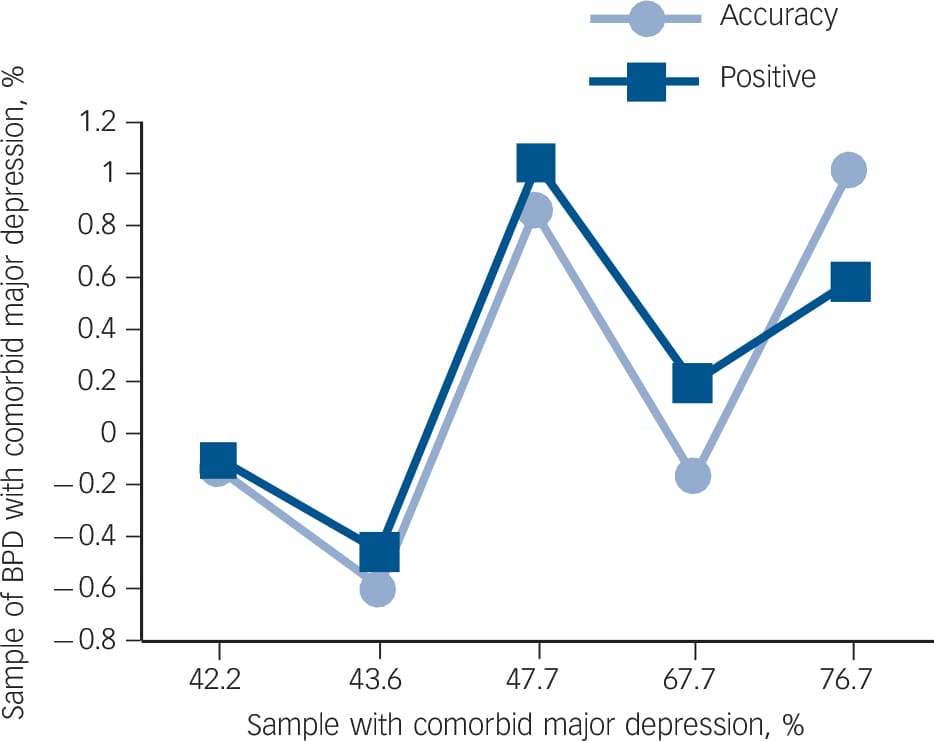Borderline Personality Disorder Test
3 Min Free Borderline Personality Disorder Test
Who Can Benefit From This Borderline Personality Disorder Test?
The Borderline Personality Disorder Test can benefit anyone who suspects they may be experiencing symptoms of borderline personality disorder (BPD). BPD is a mental health condition characterized by intense mood swings, unstable relationships, and impulsive behavior. The symptoms of BPD can be distressing and impact an individual’s daily life, relationships, and functioning.
This assessment may be particularly useful for individuals who struggle with emotional regulation, have a history of traumatic experiences, have difficulty maintaining stable relationships, or experience intense feelings of emptiness or abandonment. The assessment can help individuals better understand their symptoms and determine whether they may benefit from seeking support from a mental health professional.

Borderline Personality Disorder Test Accuracy

The accuracy of a Borderline Personality Disorder (BPD) test can depend on several factors, including the honesty and accuracy of the responses provided by the user, and the individual’s current state of mental health. It’s essential to note that a BPD test is not a substitute for a formal diagnosis by a licensed mental health professional and it is best used as a screening tool to identify potential symptoms and risk factors for BPD.
It’s essential to remember that while a test can provide useful information, it should not be used in isolation to diagnose or treat borderline personality disorder. A licensed mental health professional should interpret the results of a BPD test and provide a personalized treatment plan based on the individual’s needs.
Types of Borderline Personality Disorder Test
McLean Screening Instrument for Borderline Personality Disorder (MSI-BPD):
This is a self-report questionnaire that assesses BPD symptoms based on DSM-IV criteria. The MSI-BPD consists of 10 items, and individuals rate their symptoms on a Likert scale.
Personality Assessment Inventory-Borderline Features Scale (PAI-BOR):
This is a self-report questionnaire that assesses borderline personality features based on DSM-IV criteria. The PAI-BOR consists of 24 items, and individuals rate their symptoms on a Likert scale.
Zanarini Rating Scale for Borderline Personality Disorder (ZAN-BPD):
This is a semi-structured interview that assesses BPD symptoms based on DSM-IV criteria. The ZAN-BPD involves 10 items, and individuals rate their symptoms on a Likert scale.
Borderline Evaluation of Severity Over Time (BEST):
This is a semi-structured interview that assesses the severity of BPD symptoms over time. The BEST involves 24 items, and individuals rate their symptoms on a Likert scale.
Structured Clinical Interview for DSM-5 (SCID):
This is a diagnostic interview that assesses for the presence of BPD and other mental health conditions. The SCID involves a structured or semi-structured interview with a mental health professional.
Borderline Personality Disorder Severity Index-IV (BPDSI-IV):
This is a semi-structured interview that assesses the severity of BPD symptoms based on DSM-IV criteria. The BPDSI-IV involves 53 items, and individuals rate their symptoms on a Likert scale.
Treating Borderline Personality Disorder
- Dialectical Behavioral Therapy (DBT): This is a type of talk therapy that focuses on teaching individuals skills to manage intense emotions, improve relationships, and reduce impulsive behavior. DBT typically involves a combination of individual therapy, group therapy, and phone coaching.
- Cognitive Behavioral Therapy (CBT): This is a type of talk therapy that focuses on changing negative thought patterns and behaviors that contribute to BPD symptoms. CBT may involve exposure therapy, where individuals gradually face feared situations to desensitize them to triggers.
- Psychodynamic Psychotherapy: This is a type of talk therapy that focuses on exploring the unconscious processes that contribute to BPD symptoms. Psychodynamic psychotherapy can help individuals develop insight into their thoughts and behaviors and address underlying psychological conflicts.
- Medications: Antidepressants and mood stabilizers may be prescribed to treat symptoms of BPD, such as depression, anxiety, and mood swings.
- Self-Care Strategies: Engaging in self-care activities, such as exercise, healthy eating, and mindfulness techniques, can help individuals manage BPD symptoms and improve overall well-being.
- Support Groups: Joining a support group can provide individuals with social support and a sense of community, which can help reduce feelings of isolation and improve mood.

